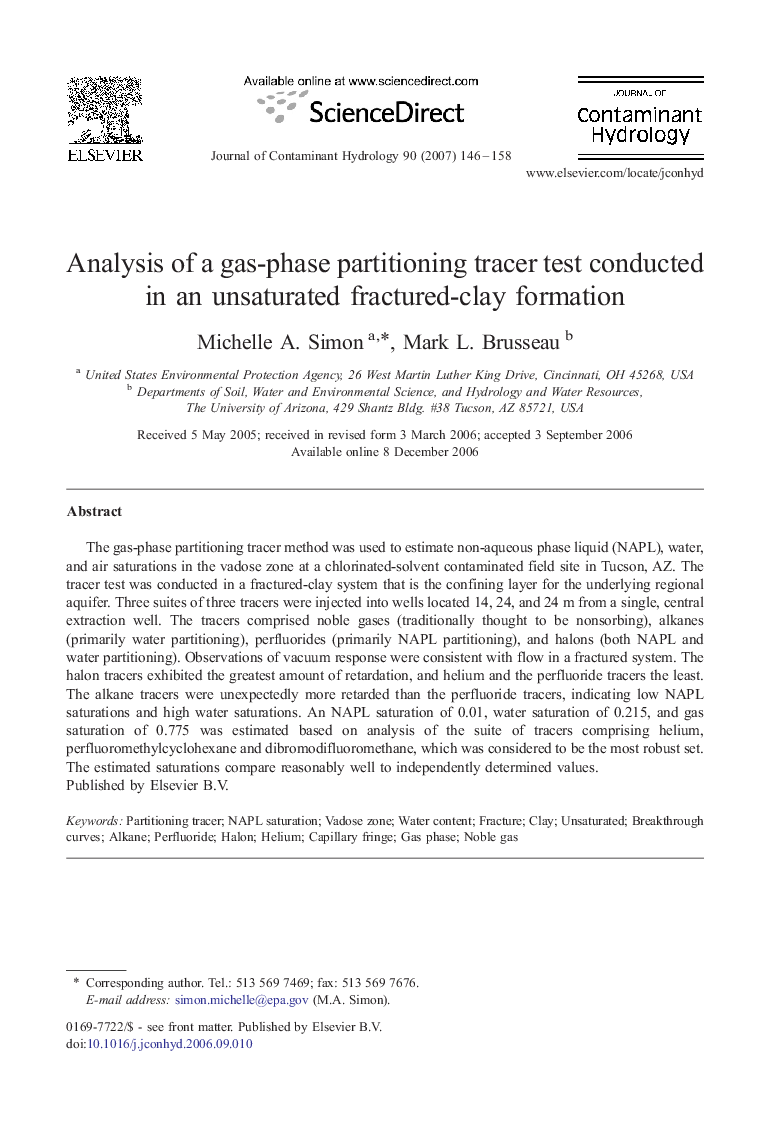| Article ID | Journal | Published Year | Pages | File Type |
|---|---|---|---|---|
| 4547578 | Journal of Contaminant Hydrology | 2007 | 13 Pages |
Abstract
The gas-phase partitioning tracer method was used to estimate non-aqueous phase liquid (NAPL), water, and air saturations in the vadose zone at a chlorinated-solvent contaminated field site in Tucson, AZ. The tracer test was conducted in a fractured-clay system that is the confining layer for the underlying regional aquifer. Three suites of three tracers were injected into wells located 14, 24, and 24Â m from a single, central extraction well. The tracers comprised noble gases (traditionally thought to be nonsorbing), alkanes (primarily water partitioning), perfluorides (primarily NAPL partitioning), and halons (both NAPL and water partitioning). Observations of vacuum response were consistent with flow in a fractured system. The halon tracers exhibited the greatest amount of retardation, and helium and the perfluoride tracers the least. The alkane tracers were unexpectedly more retarded than the perfluoride tracers, indicating low NAPL saturations and high water saturations. An NAPL saturation of 0.01, water saturation of 0.215, and gas saturation of 0.775 was estimated based on analysis of the suite of tracers comprising helium, perfluoromethylcyclohexane and dibromodifluoromethane, which was considered to be the most robust set. The estimated saturations compare reasonably well to independently determined values.
Keywords
Related Topics
Physical Sciences and Engineering
Earth and Planetary Sciences
Earth-Surface Processes
Authors
Michelle A. Simon, Mark L. Brusseau,
